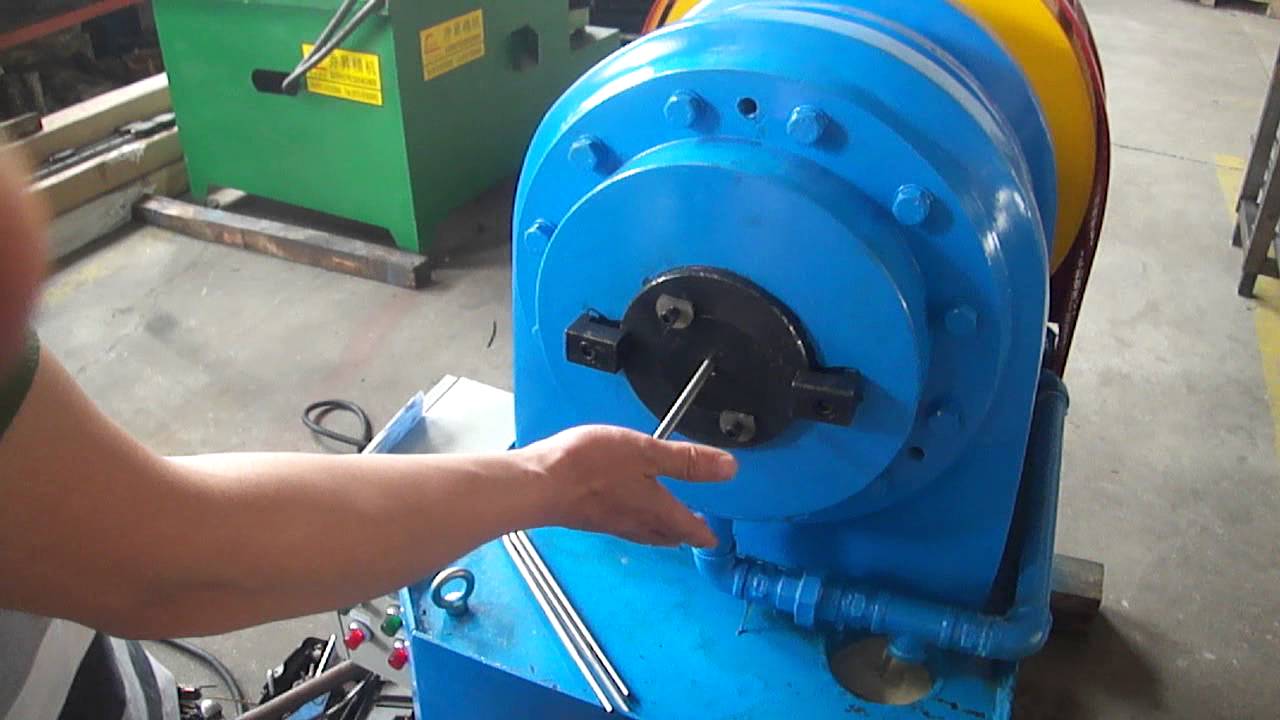Swaging machine are utilized for pointing, sizing and forming metal wires, rods and tubes. Generally, the swaged section of the material produced is c
Swaging machine are utilized for pointing, sizing and forming metal wires, rods and tubes. Generally, the swaged section of the material produced is circular in nature.
Rotary swagers are used to produce cartridge heaters, hypodermic tubing and other industrial products including armaments, piping and logging industry applications. Additionally, the thickness and internal diameter of tube can be controlled by utilizing shaped mandrels.
Benefits
The swaging process is a cold forming method that can be used with many types of metal. It is most commonly performed on hoses or tubes with fittings but can also be done on rods and wire cable. Unlike other cold forming processes, swaging does not cause any material loss. In fact, it increases the overall strength of a metal part.
Swaging can be done internally or externally, with the latter being more common when mounting a tube to a hose or pipe. This technique can ensure that the internal diameter of a hose fitting matches the internal diameter of the tube it is being mounted to. This can help lower the risk of bacteria accumulation or turbulence.
The swaging process can also be combined with other forming techniques, such as pipe flaring or compression swaging. A combination swaging machine combines both of these methods into one unit. This type of swaging machine can also be used for long, shallow tapers that are not possible with standard dies on a rotary swager.
Variations
Whether done by hand or power, swaging offers speed, precision and safety plus a degree of versatility known to few other bullet-making processes. Within a given diameter of bullet, many different styles can be produced using only modest modifications to the basic tooling set. And unlike casting, no molten metal is involved, so the operation can be conducted in small spaces with minimal ventilation and without fire insurance worries.
It also helps that the amount of pressure required to size and seat a case or core in a bullet requires a fraction of the force needed for cold-flow swaging. This reduces the cost of a power system compared to other types of machine and allows for a simpler drive design.
In contrast, air systems transfer energy almost instantly, which can lead to shock waves that can crack swaging dies when the ram is stopped suddenly. Conversely, a hydraulic press transfers energy in a uniform manner and can be shut off almost immediately by switching a valve.
Safety
Swaging is an operation that requires the use of force. This is why it must be done in a controlled and monitored environment. Despite this, swaging machines are safe to operate for most users. The machine is built to limit any swaging operation beyond its limits. This ensures that the material is not subjected to any forces that may cause it to fail or damage.
A rotary swager has two or four dies that separate and close up to 2,000 times per minute. The dies are mounted into the spindle of the machine that is surrounded by rollers (looks like a cage). As the spindle rotates, the hammer blocks strike the rollers and compress the die halves.
This reduces the diameter of the rod or wire and combines it with the collar material to create a stronger joint. The swaged end also has a smooth surface that prevents the cable from creating friction as it moves. This is especially important for medical cables that must move smoothly over pulleys and through conduit to function properly.
Applications
Swaging machines are used in a wide range of applications for pointing, forming and reducing rod, tube, wire and cable. Some of the most common swaging machine types are stationary, rotary and butt swagers. They are often utilized to attach fittings onto cables for the marine aerospace industry, or swaging is used for end forming on a variety of hose or tubing systems.
This process is also popular for cold swaging, or reducing the overall diameter of long lengths of wire and rod to a desired tensile strength. This can be done with or without a mandrel. Using a mandrel allows for a much more precise internal swaging of the tubes that are required in a variety of applications from fluid control to aerospace.
The most consistent swage diameter results from the patented geometry controlled die mechanism, not swaging force or pressure. This ensures that the final swage is incredibly consistent. This is a key advantage when working with rubber components in mold bonded metal sleeves.

COMMENTS